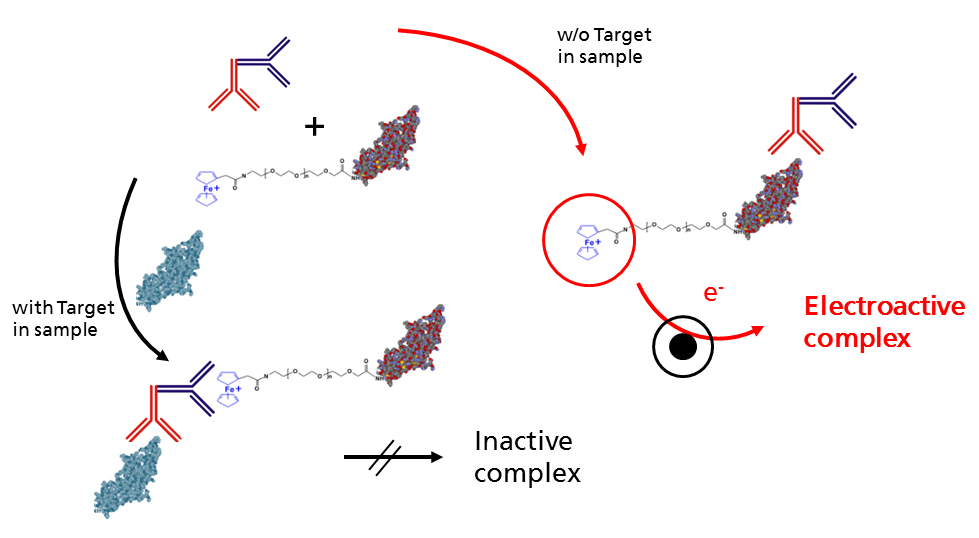
Competitive redox quenching immunoassay, taking the example of the pregnancy hormone hCG (schematic). The hCG level in the urine continuously increases after conception (fertilization of the egg). A sample lacking hCG (i.e. not pregnant) triggers a high current signal (green). A sample containing hCG (i.e. successful conception) triggers a lower current signal (red). The signal change takes just 15-20 seconds.
In homogeneous immunoassays, signal generation occurs in the volume phase, simultaneously with antibody-antigen binding. Immobilization of one of the binding partners and washing steps are not required. This makes the assays particularly fast and easy to automate. We use fluorescence quenching or electrochemical signaling for the detection of small molecules such as steroid hormones or illegal drugs.
Range of Services:
- Development of customized homogeneous assays with electrochemical, fluorimetric or chemiluminescence readout.
- Optimization of conventional ELISA and miniaturized lab-on-a-chip immunoassays (up to 90% antibody savings and reduction of assay time)
- Immunoassays in undiluted biological media (saliva, whole blood, milk ...)
- Assays with alternative binders (aptamers, peptides, MIPs ...)
- Mathematical simulation of immunoassays
 Fraunhofer Institute for Cell Therapy and Immunology, Branch Bioanalytics and Bioprocesses IZI-BB
Fraunhofer Institute for Cell Therapy and Immunology, Branch Bioanalytics and Bioprocesses IZI-BB